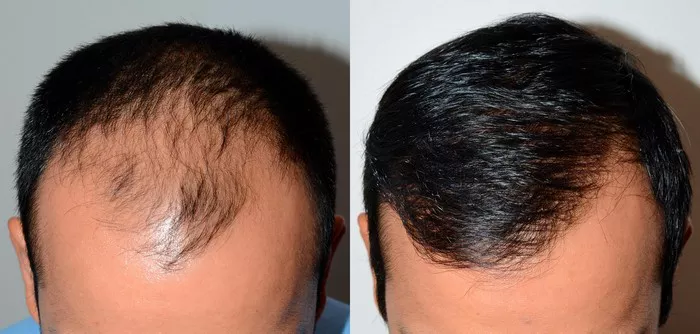Hair transplants have gained immense popularity as an effective solution for hair loss. While many individuals are eager to regain their confidence through this procedure, one common question looms large: how long does it take? This article aims to answer that question comprehensively, detailing the entire hair transplant process, from consultation to recovery, and providing insights into what patients can expect at each stage.
Understanding Hair Transplants
What is a Hair Transplant?
A hair transplant is a surgical procedure that involves relocating hair follicles from one part of the body, known as the donor site, to areas experiencing hair loss or thinning, referred to as the recipient site. This technique primarily aims to restore a natural-looking hairline and enhance hair density.
Common Techniques
The two main techniques for hair transplantation are:
Follicular Unit Transplantation (FUT): Involves removing a strip of scalp from the donor area, which is then dissected into individual follicular units for transplantation.
Follicular Unit Extraction (FUE): Involves extracting individual hair follicles directly from the scalp using a specialized tool, leaving minimal scarring.
Both methods have their advantages and can achieve similar results, but the duration of the procedure and recovery may vary.
Pre-Procedure Timeline
1. Initial Consultation (1-2 Weeks)
Before undergoing a hair transplant, the first step is to have an initial consultation with a qualified surgeon. This meeting typically lasts about an hour and involves:
Medical History Review: Understanding your hair loss patterns, medical conditions, and family history.
Scalp Examination: Assessing the quality and quantity of hair in the donor area.
Discussion of Goals: Setting realistic expectations for the outcome of the transplant.
2. Preparation (1 Week)
Once you decide to proceed, there will be a preparatory period that may take about a week. During this time, your surgeon may recommend:
Pre-Operative Instructions: These may include avoiding blood thinners, alcohol, and smoking, which can affect healing.
Scheduling the Procedure: Finding a suitable date for the transplant.
The Hair Transplant Procedure
1. Duration of the Surgery (4-8 Hours)
The actual hair transplant surgery can take anywhere from 4 to 8 hours, depending on various factors, including:
Number of Grafts: The more grafts you need, the longer the procedure will take. Typically, one session may involve anywhere from 1,000 to 3,000 grafts.
Technique Used: FUE procedures tend to take longer than FUT due to the meticulous extraction of individual follicles.
2. Anesthesia and Comfort
During the procedure, local anesthesia is administered to ensure patient comfort. Patients may also be offered sedation to help them relax, but they will remain awake throughout the surgery.
3. Hair Follicle Transplantation
Once anesthesia takes effect, the surgeon will begin transplanting hair follicles into the recipient site. This step involves:
Creating Recipient Sites: Tiny incisions are made in the scalp to accommodate the new follicles.
Placing the Follicles: The harvested follicles are carefully placed into the incisions, following the natural hair growth pattern to achieve a realistic appearance.
Post-Procedure Recovery
1. Immediate Recovery (1-2 Days)
After the surgery, patients will typically spend some time in a recovery area before going home. Initial recovery steps include:
Rest: It’s crucial to rest and avoid any strenuous activities.
Managing Discomfort: Mild pain, swelling, and redness may occur, which can be managed with prescribed medications.
2. First Week (7-10 Days)
During the first week post-transplant, patients should expect:
Scab Formation: Small scabs will form on the transplanted areas, which is normal.
Follow-Up Appointment: A follow-up visit may be scheduled to monitor healing and address any concerns.
3. Shedding Phase (2-4 Weeks)
About 2 to 4 weeks after the procedure, patients may experience shock loss, where the transplanted hair falls out. This is a normal part of the healing process, and it typically does not indicate failure of the transplant.
4. Hair Growth Phase (3-6 Months)
Hair growth begins to become noticeable around 3 months post-surgery. At this stage:
New Hair Development: Patients may see fine hair emerging in the recipient area.
Continuous Growth: Hair will continue to grow and thicken over the next several months.
5. Final Results (6-12 Months)
The final results of a hair transplant can usually be seen between 6 to 12 months post-procedure. Key points include:
Full Thickness: The transplanted hair will have achieved its maximum density.
Natural Appearance: The hairline will appear natural, blending seamlessly with existing hair.
Factors Influencing Healing Time
While the general timeline for hair transplants is outlined above, several factors can influence individual healing times, including:
Patient Age: Younger individuals may heal faster than older patients.
Health Status: Underlying medical conditions can affect recovery and hair growth.
Post-Operative Care: Adhering to post-operative guidelines can significantly enhance healing.
Surgeon’s Experience: A skilled surgeon can optimize techniques that promote better healing and results.
Conclusion
Understanding the timeline for a hair transplant is essential for anyone considering the procedure. From the initial consultation to the final results, knowing what to expect can alleviate anxiety and set realistic goals. While the entire process, including recovery, can take several months, many patients find the results to be worth the wait. By choosing a qualified surgeon, following pre-and post-operative instructions, and maintaining realistic expectations, individuals can navigate their hair restoration journey with confidence. If you’re contemplating a hair transplant, consult with a professional to discuss your specific needs and timelines.
Related topics:
- The Best Hats to Wear After a Hair Transplant: A Full Guide
- Can Hair Transplant Fail? Knowing the Risks and Realities
- How to Sleep After a Hair Transplant: Essential Tips


